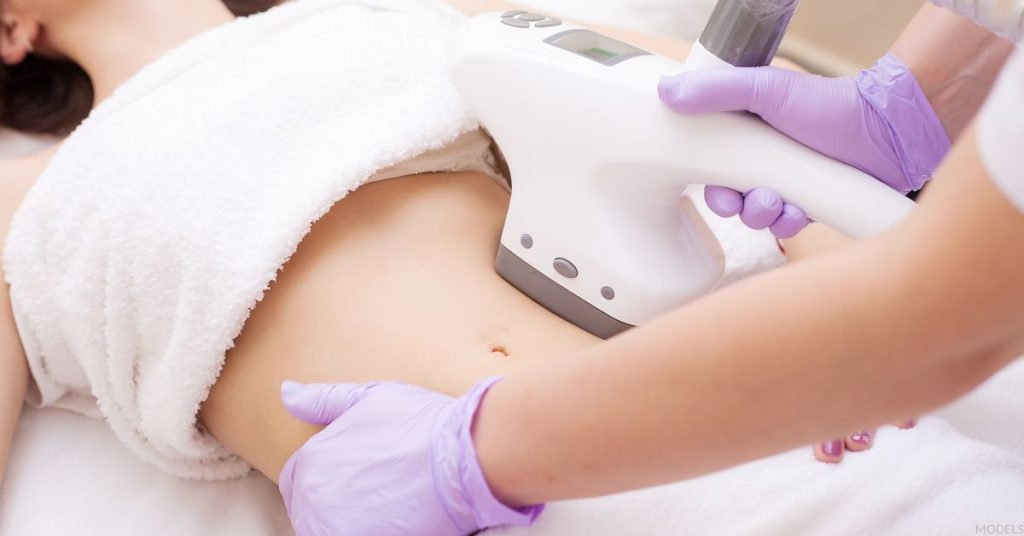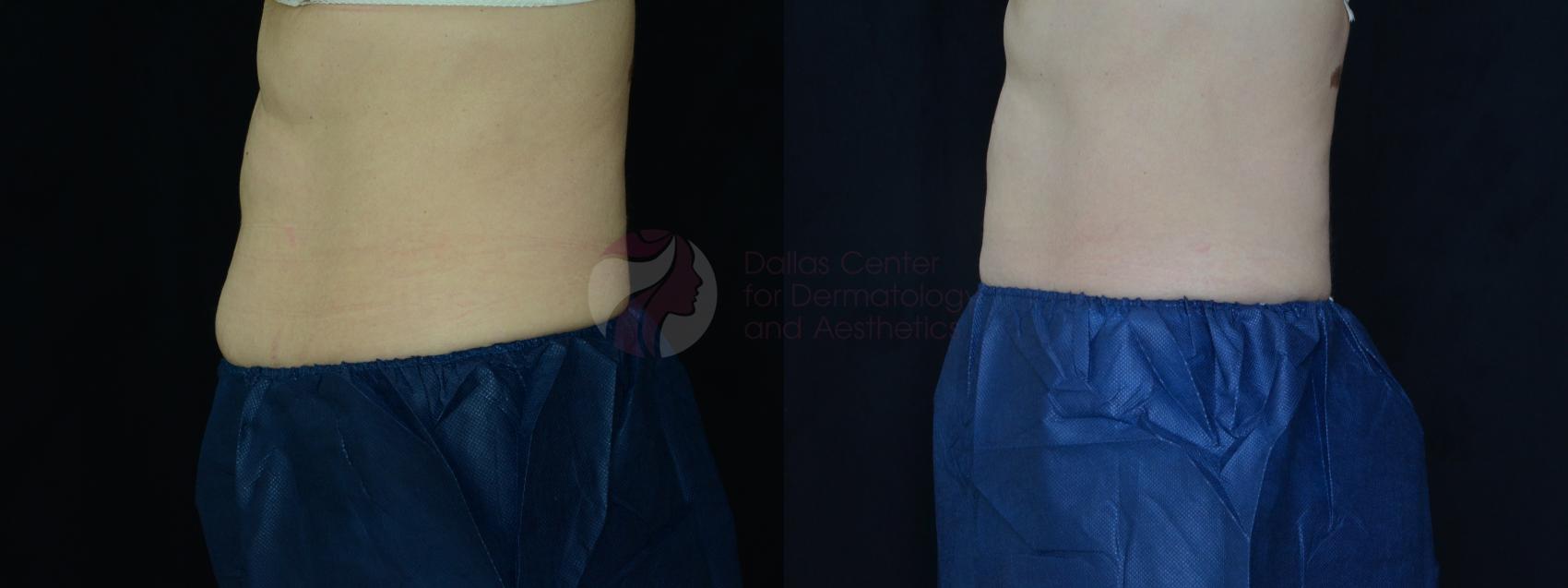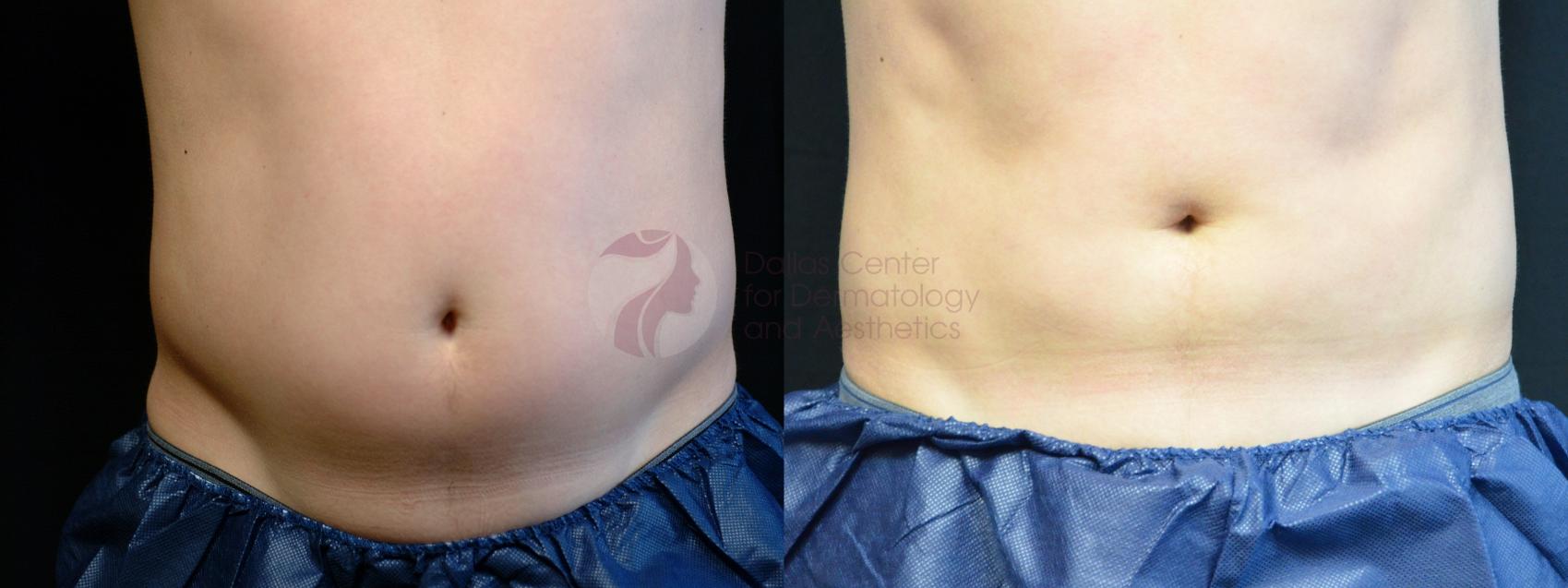Are you tired of stubborn fat that seems resistant to diet and exercise? You’re not alone. Many women and men struggle with pockets of fat that just won’t budge, no matter how hard they try. CoolSculpting is a pioneering nonsurgical fat reduction treatment that targets unwanted fat in most areas of the body. One of the first questions we hear from patients, however, is how much does CoolSculpting cost?
How Does CoolSculpting Work?
CoolSculpting targets fat cells with temperatures cold enough to destroy them without injuring nearby tissue. The fat cells gradually die and are flushed away as part of the body’s normal metabolic processes. A clinical study showed that a single treatment “resulted in a normalized fat layer reduction of 20.4% at 2 months and 25.5% at 6 months after treatment.”1
What Affects the Cost of CoolSculpting?
The cost of CoolSculpting varies depending on several factors, including the size of the treatment area, the number of sessions required, and the provider’s geographic location. Even though the average cost of CoolSculpting is about $2,742 in Texas, according to RealSelf, the cost of CoolSculpting in Dallas may be different than in smaller cities or towns. Aditionally, the cost of the procedure can vary greatly depending on whether a small or large applicator is used (more expensive for a large applicator), and the amount of fat that is desired for reduction. Some patients may not need as many treatments as others. The more treatments the patient needs, the more expensive the total cost.
What Areas Does CoolSculpting Treat?
CoolSculpting is cleared by the FDA to treat multiple areas of the body, making it a versatile option for targeting various problem areas. CoolScupting has various applicators designed to fit different areas of the body. The CoolMini™ applicator, for instance, fits snugly under the chin to reduce the appearance of a double chin.
Other common treatment areas include:
- Abdomen
- Flanks (love handles)
- Inner and outer thighs
- Upper arms
It’s important to remember that CoolSculpting isn’t a weight loss treatment. Good candidates for the procedure are in good overall health, at or near the weight they want to maintain, and have realistic expectations about the results. For the right patients, CoolSculpting is a cost-effective, no-downtime alternative to surgical procedures such as liposuction.
CoolSculpting vs EMSCULPT®
While CoolSculpting focuses on eliminating fat through controlled cooling, EMSCULPT takes a different approach by targeting muscle tissue with electromagnetic energy. Both treatments offer unique benefits and are often used in combination to achieve comprehensive body contouring results.
Among its many benefits, CoolSculpting:
- Targets and eliminates stubborn fat cells
- Is noninvasive and requires minimal downtime
- Produces gradual, natural-looking results
- Reduces fat in various areas of the body
- Achieves results with 1 or 2 treatments per area
Among its many benefits, EMSCULPT:
- Stimulates muscle contractions to build and tone muscles
- Is noninvasive and requires no downtime
- Enhances muscle definition and strength
- Improves muscle tone and contour in specific areas
- Achieves results with 4 treatments over 2 weeks
When comparing costs, EMSCULPT tends to be slightly more expensive per treatment session compared to CoolSculpting. However, the total cost may vary depending on the individual’s treatment goals and the number of sessions required to achieve those results.
Start With a Consultation
During your consultation, one of our providers will assess your areas of concern, discuss your desired outcome, and create a customized treatment plan tailored to your needs and budget. We provide detailed cost information after your consultation. You can request a consultation using the online form or call us at (214) 631-7546 to schedule an appointment.
1 Coleman S.R., Sachdeva K., Egbert B.M., Preciado J., Allison J., Clinical efficacy of noninvasive cryolipolysis and its effects on peripheral nerves, Aesthetic Plastic Surgery: 2009; 33(4):482-488. http://www.ncbi.nlm.nih.gov/pubmed/19296153





test